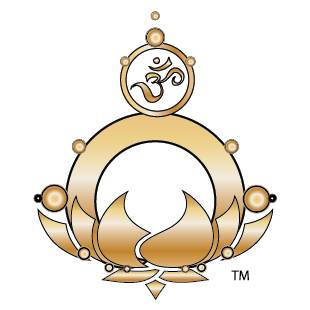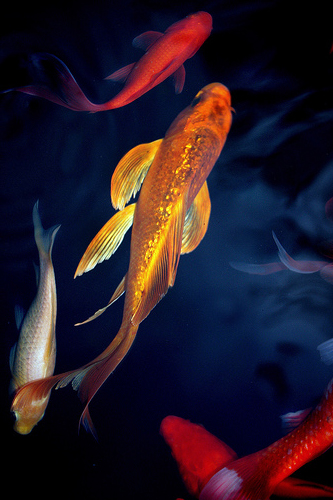Zen Shui or Feng Shui
Yah, I like Zen Shui better than Feng Shui. The name says it all: It adds zen to your flow.
Fēng Shuǐ, pronounced [fɤ́ŋ ʂwèi] is a Chinese philosophical system of harmonizing the human existence with the surrounding environment. The term Feng Shui literally translates as “wind-water” in English. The Feng Shui practice was created so we could work with energy flow otherwise known as Qi/Chi.
 The bagua (Chinese: 八卦; literally “eight symbols”) are eight trigrams used in Taoist cosmology to represent the fundamental principles of reality, seen as a range of eight interrelated concepts. Each consists of three lines, each line either “broken” or “unbroken,” representing yin or yang, respectively. Due to their tripartite structure, they are often referred to as “trigrams” in English.
The bagua (Chinese: 八卦; literally “eight symbols”) are eight trigrams used in Taoist cosmology to represent the fundamental principles of reality, seen as a range of eight interrelated concepts. Each consists of three lines, each line either “broken” or “unbroken,” representing yin or yang, respectively. Due to their tripartite structure, they are often referred to as “trigrams” in English.
The trigrams are related to taiji philosophy, taijiquan and the wu xing, or “five elements.” The relationships between the trigrams are represented in two arrangements, the Primordial (先天八卦), “Earlier Heaven,” or “Fuxi” bagua (伏羲八卦), and the Manifested (後天八卦), “Later Heaven,” or “King Wen” bagua. The trigrams have correspondences in astronomy, astrology, geography, geomancy, anatomy, and family. (source Wikipedia)
Feng Shui Got Ugly
Historically, Feng Shui was widely used to orient buildings—often spiritually significant structures such as tombs, but also dwellings and other structures—in an auspicious manner. Depending on the particular style of Feng Shui being used, an auspicious site could be determined by reference to local features such as bodies of water, stars, or a compass. Feng Shui was later suppressed for many reasons, partially due to the ever growing folk remedies, superstitions, and misuse (too many mirrors to deflect an unfavorable neighbor, or urinating on property parameters, I kid you not) diluting the integrity of the original principles. It has since experienced a surge in popularity, but hopefully with a little more rationale. Keeping energy positively flowing through one’s home brings great harmony. Protecting one’s home from unfavorable energy is also comforting. But going out of one’s way to deflect perceived negative energy, especially with assertive methods, is not what Feng Shui was intended for. It is important that in all things we do, thoughts we have, and intentions we set, to go forth with harmonious outcomes in mind and not to get caught up in otherwise negative thinking.
The bagua can be just as effective as it is confusing. Applying the octagon to a space is not always practical, especially a long rectangular property or awkward floor plan. Consider the bagua more like an inspiring guide. If you lay the bagua over the top of your floor plan, your front door will default to the knowledge, career, or helpful people areas. Consider each room an opportunity to balance an area of your life so that you can better manifest your goals and promote harmonious relationships and good health.
The primary objective is a balanced home. Within your space, and each room, create balance with inspiring stimulation. Plants, even fake, suggest life and growth. Images of water and fountains suggest movement, flow, and rebirth. Inspiring, thought-provoking artwork keeps your mind engaged and creative. Dimensional art, such as mobiles and sculptures, is even better. Statues or images of religious, successful, or helpful icons keep you focused on your values and goals. Books, magazines, and games keep your mind stimulated, and if they are inline with your aspirations, even better. Photos of family members and happy memories keep your heart in tune and also remind you of why you work so hard towards your goals. Each of the elements also plays into this harmonious setting you create.
Colors incite emotions–lifting you up, bringing you down, possibly even aggravating you. It’s important to understand your relationship with colors and embrace them in ways that help, rather than hinder. Yellow is at the core of the bagua. Interestingly enough, it is also the color of the 3rd Chakra, located in our solar plexus, our core. Yellow is the color of the sun, and we are happy in golden sunlight. Happy faces are yellow. On the flip side, bright yellow can be an aggravating color, triggering arguments and irritation. It suggests “caution” at stop lights, but is also associated with comfort food. Bright yellow may not be the best color for a main living room or even an infant’s room. However, golden hues of yellow often set a soothing, warm glow to a room. The same can be said of red, another strong color with positive or negative effects, depending upon the hues and application.
A perfect example to keep in mind is that of an Advertising firm whose interior designers applied the Feng Shui principles to a lead executive’s office. When clients came into his office they saw a harmonious and subdued painting of blues, greens, and earth tones. The executive faced the clients. Behind them was a painting full of dramatic red and strong brush strokes. The clients were lulled into an agreeable state of mind, but the executive stayed fired up so he could successfully seal the deal. The seating also played a significant role. His chair was slightly higher than theirs, and had a tall, broad back that made the executive seem confident. The clients’ chairs were plush and comfortable which made them feel relaxed and agreeable. Take a look around next time you visit a major chain store. Starbucks and even McD’s these days are steppin up. Visiting an impressive hotel? Really take note of the decor and floor plan. A lot of thought goes into harmonizing with you as soon as you walk in the door, getting you to walk in the right direction, and easing you into a happy state of mind so you want to come back, another satisfied customer…
Feng Shui can be relatively easy and it doesn’t have to cost much at all. As you’ll see, the colors of the bagua are also represented in the colors of the chakras. If you’d like to work on various issues within your life, you can use color and elements to bring harmony. The two concepts play very nicely together. Like everything else we discuss here, getting zen with your flow in every aspect of your life is the goal.
FENG SHUI MAIN POINTS by FengShui & Beyond
Color is vibration. Everything is alive and made of energy and everything vibrates at a particular frequency. The same is true for Feng Shui colors — each color vibrates at its own unique frequency. Just as you and your home are connected through a multitude of overlapping energy fields, you are connected to the colors in your home in the same way.Along with Feng Shui and other environmental metaphysics, color psychology is a very simple yet powerful tool for creating your own reality. Color has a remarkable impact on your psychological and physical well-being. Once you begin to understand Feng Shui colors, you can use them to your advantage—both as a metaphorical and literal instigator of positive change in your life.
Using color in your home is not a cut-and-dried approach. There are three things to take into account when using Feng Shui colors:
- First, consider the common psychological effects of color and see what resonates with you;
- Second, review the different areas of the Feng Shui bagua and see what colors correspond to each life situation;
- Third, read which colors are appropriate for each room according to Feng Shui principles.
Follow your intuition, and use your best judgment. Use colors that you love and that energize and inspire you. If you are told that purple represents abundance, but you hate purple, then do not use it. Use a color that represents abundance to you.
Your home is the threshold between your inner reality and your outer reality. It can be used both to understand who you are now and to direct where you want to go in the future.
Everything is connected and made of energy. So when you change the energy in your home, it directly affects you.
Your intention is everything.

